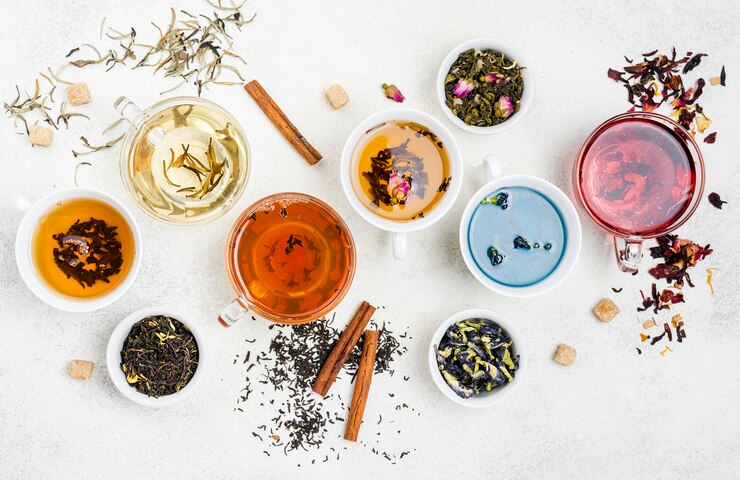
As a holistic nutritionist, I believe a balanced diet rich in healthy fats, proteins, fiber, and complex carbohydrates is essential for vibrant health. But I also enjoy exploring the benefits of everyday herbs and spices, like those we have in our kitchens. I’ve previously discussed ginger, turmeric, and maca, and today, I’m excited to talk about one of my top choices: cinnamon!
I often use cinnamon in my dessert and smoothie recipes because it adds natural sweetness without the need for sugar or additional calories. It’s versatile enough to sprinkle over smoothies and juices or incorporate into savory dishes like my Baked Apple Cinnamon Pancakes.
In this post, you’ll learn everything about cinnamon, including its origins, seven impressive health benefits, how to select the best quality, and a variety of delicious recipes to naturally support your health.
What Is Cinnamon?
Cinnamon is a wonderfully aromatic spice that’s derived from the bark of trees in the Cinnamonum genus. Its unique scent comes from cinnamaldehyde and other components like eugenol, which not only contribute to its flavor but also offer numerous health benefits.
Historically, around 2800 BC, cinnamon was used in medicine and spiritual practices. It’s produced by cutting stems from cinnamon trees and extracting the inner bark, which curls into the familiar cinnamon sticks as it dries. These sticks can be ground into cinnamon powder, making it a versatile addition to both sweet and savory dishes. Whether using cinnamon powder or sticks, it’s perfect for enhancing recipes or even making your home smell festive during the holidays.
Difference Between Ceylon (True) Cinnamon and Cassia Cinnamon
True cinnamon, or Ceylon, differs from cheaper varieties, originating from different trees. Typically, true cinnamon is grown in places like Sri Lanka, India, and Madagascar, whereas other types often come from China, Indonesia, or Vietnam.
Ceylon cinnamon is lighter both in color and flavor, offering a sweeter taste compared to the spicier, darker cassia cinnamon commonly found in grocery stores. A key difference is their coumarin content—a compound that affects blood thinning and liver health. Ceylon cinnamon has about 0.017 g/kg, while other varieties contain much more. For those on blood-thinning medications or concerned about liver health, Ceylon cinnamon is the safer choice.
Top 7 Health Benefits of Cinnamon
Having learned about the differences, let’s explore the remarkable health advantages of cinnamon:
1. Powerful Anti-Inflammatory
Cinnamon’s anti-inflammatory properties can combat chronic inflammation linked to various diseases and aging signs, potentially lowering inflammation markers like C-reactive protein.
2. Supports Brain Health
Research indicates cinnamon’s protective anti-inflammatory effects might shield against neurodegenerative diseases like Alzheimer’s, offering hope in brain health maintenance.
3. Balances Blood Sugar
Cinnamon can help stabilize blood sugar, benefiting those with prediabetes, Type 2 diabetes, insulin resistance, or PCOS by improving insulin response and lowering blood sugar levels.
4. Heart Health Support
Heart disease is a universal concern, and regular cinnamon consumption may aid in reducing blood pressure and managing cholesterol and blood sugar levels, promoting heart health.
5. Antibacterial and Antifungal Properties
Cinnamon’s cinnamaldehyde may protect against infections, with studies suggesting it can combat bacteria like Salmonella and Listeria.
6. Antiviral Properties
Cinnamon may bolster your immune system against viruses responsible for colds and flu, thanks to its phenolic compounds.
7. Nutrient Rich
Cinnamon is rich in manganese, vital for bone health and metabolism, along with fiber, calcium, and iron for digestion, bone strength, and energy production.
Shopping for High Quality Cinnamon
To maximize cinnamon’s health benefits, select organic varieties to avoid contaminants. Here are tips for finding superior Ceylon cinnamon:
1. Look for labels indicating it’s Ceylon cinnamon.
2. Opt for organic cinnamon to prevent pesticide contamination.
3. True cinnamon sticks often curl in a circular shape.
4. Ceylon cinnamon is lighter and fluffier than cassia.
5. It’s usually more expensive, a helpful indicator when combined with the other points.
I hope this inspires you to add cinnamon to your meals to boost nutrient density, support blood sugar balance, and combat inflammation. It’s truly a cost-effective way to enhance your diet.
I didn’t realize there were two types of cinnamon! I use it daily in my oatmeal and will now search for “real” cinnamon. Thanks for sharing this info.
You’re welcome, Diane! I’m glad the information was helpful to you.


